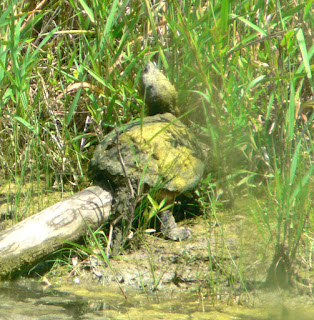
I was talking to a friend a few years back, and when I mentioned hunting season, she gave a great groan and asked "What's the point of killing innocent deer? It's just another one of those disgusting sports, isn't it?" Prior to that day, I hadn't really thought about why hunting season was necessary.
In my "Bug Eating Heroes" blog entry, I mentioned that if bats were killed off, the bug population would explode. I also mentioned that it's the same with sharks keeping control of the seal population. If we continue to kill bats because they're "dirty" and sharks because they're "vicious man eaters", we'd have to make an annual "Bug Hunting Season" and "Seal Hunting Season." It sounds ridiculous, but I'm sure people a hundred years ago would've laughed at the thought of a "Deer Hunting Season." We had already made the mistake with the wolf and cougar population. Since wolves (Canis lupis) and cougars (Puma concolor) were killing livestock and on rare occasions attacking humans (only true with Cougars), they decided to kill them near extinction thinking that it was the right choice for everybody. However, without a natural predator, the white tailed deer (Odocoileus virginianus) population exploded leaving us no choice but to hunt them ourselves.
But is deer hunting really that necessary? We learned just how necessary it is this year. Hunting season is split up into two weekends in November. However, last fall, hunting season was cut short when we had a weekend long blizzard in Illinois, so of course no one hunted. Sure, no big deal that only half of the deer got killed last season. Well this spring, it was near impossible to go down the road without nearly hitting a deer. And for the first time ever, we had deer in our garden. We went out there one morning to see that all of our pepper and tomato plants had been eaten to the roots, and our corn was mostly eaten. I assume they went for our garden as opposed to the corn field across the road because we grow organic sweet corn as opposed to sprayed cow feed. The corn had recovered and produced plenty of delicious corn just to be mostly destroyed by the deer again.
In Halloween 2005, my family rented the movie, "Night of the Lepus." Just by the sound of it, you can tell that it's another cheesy 70's horror flick. As stupid as this movie is, it does touch on the whole Never Mess With Nature's Plan. A local rancher is friends with a lab scientist and when he has trouble with coyotes, the scientist develops a chemical that destroys the wild dog population. But with no coyotes, the rabbit population gets out of control. When the rancher goes to the same scientist for another cure, the scientist comes up with a germ that should destroy that population too. Since it was a germ, when the rabbit was released back into the wild, the germ spread to the other rabbits. But the germ doesn't kill the rabbit population (shocker), instead it turns them to the size of wolves and makes them go carnivorous.
In the 1980's, the aphids were starting to get out of control, so we decided to bring in the Asian Ladybugs (Harmonia axyridis). They took care of our aphids problem but left us with another problem, them. The Asian Ladybugs are also nicknamed the Halloween Ladybug since they invade our homes in October in preparation for winter. In my family... and pretty much all of my friends' families, this time is nicknamed "Ladybug Season." The most dreaded season. Since the Asian Ladybug is not native to our country and has no natural predator, so they're invading the country with no control.
So in case a wolf gets one of your calves, or bats creep you out, don't go doing anything crazy like annihilating the species or bringing in another species to do it. Before doing anything crazy, you always have to look at both sides. Sure, a cougar took down your favorite cow, and the same thing happened to your friend. But you can't just decide that cougars are no use, that they're just dangerous. You really have to think of what the animal does for our earth. A hundred years ago, farmers thought wolves were a nuisance when really they were keeping the deer population balanced. Do the earth a favor, and really think about nature's plan.










